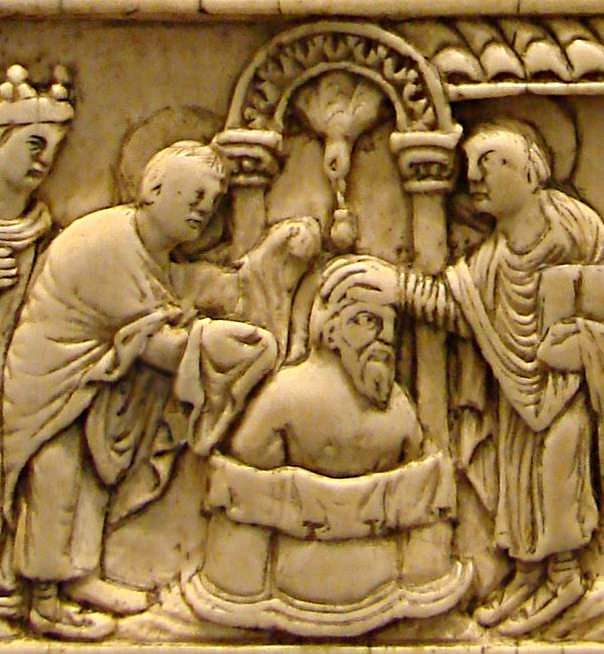01A: Constantine’s Rome and the Rise of Christianity
Levels of focus in this course
- International: the big (political) picture
- Regional: Italy
- Christianity and the church
- Local
Today: ca. 300-600
Major transitions: end of antiquity
Rome in the Roman Empire: a regional city
Newcomers: “Germanic invasions”: ca 380-600
Early: Romanized gradually via army
Late 4th c+: larger numbers, inconsistent in familiarity with Roman society
Italy: East Goths, also West Goths (Ostrogoths, Visigoths)
- 410 Sack of Rome by Visigoths
- Visigoths move to Iberia
Huns: invaders not settlers Attila king 434-453
- negotiations: included Bishop of Rome Leo I (452): “Pope”
Ostrogothic rule in Italy
Kept Roman administration
Arian Christians
476 (or 480) “Fall of Empire in the West” Ostrogothic king answers to Emperor
Mausoleum of Theodoric (Ravenna)
Franks: northern and western Europe
480s cross Rhine to support Gallo-Roman armies against Visigoths, Huns
Took over much of Gaul
493 Leader, Clovis, converted to Catholic Xianity

Baptism of Clovis by St. Remigius. Saint Remigius binding, last quarter 9th century CE, ivory, Musée de Picardie in Amiens, France.
Law codes vary by populations
500s: an effort to re-unify Italian peninsula under imperial rule
Justinian I (527-65): wars against Goths
560s: Lombards enter Italy to support Goths against Byzantines
- Dukes; Po valley, Spoleto, Benevento (Byzantine control in between)
- Own law code
- Pavia: capital
- Lower taxes but less support of trade; land the basis of both wealth, power
Byzantines: southern Italy, Sicily, Ravenna-Rome
- Exarchate of Ravenna: combines civilian, military rule
- End of Senate in Rome
- Ex: Sarcophagus of Isaac, a 7th c exarch (using 5th c relief)
Rise of Christianity
Beginnings: Roman Judaea
Jesus of Nazareth approx. 3 BCE-30 CE
Writings by followers: from end of 1st c
- Gospels, Acts, Letters (or Paul and others—Paul, ca 5-ca 67), Apocalypse
- 180 ca: Collected, canonized
- Greek
Development of Christianity as religion: banned until age of Constantine (Internalist historical view)
Standardizing belief
- Canonical text: New Testament
- Creeds
- Disagreements: should tools of Greek philosophy help address them? Mostly yes
Organization: an emphasis on community
- bishops
- priests or presbyters
- deacons and deaconesses
practices
- eucharist, baptism
Christians in the Roman Empire (externalist historical view)
Inconsistent enforcement of ban assisted spread: first in Greek-speaking cities, also Rome
New hero: the martyr
Rome: Peter (apostle), Paul (doctrinal leader)
Catacomb of SS. Pietro and Marcellino: Crypt of the Saints: Christ between SS. Peter and Paul
St. Agnes (between popes Honorius and Symmachus) 7th c, Sant’Agnese Fuori le Mura
Constantine (emperor 312-27): the transition point
Edict of Milan 312-313
4th c: spread among many elites
394: Christianity only accepted religion in Empire (exception for Judaism)
Councils: establishing standards of correct belief
- Ex: Nicaea, 325
- Heresy
- Orthodoxy
- Heterodoxy
5 patriarchates (Apostolic sees):
- Rome (Peter and Paul)
- Constantinople (St Andrew)
- Alexandria (Mark)
- Antioch (Peter)
- Jerusalem (Peter and James)
Local: What did Constantine add to the city?
- Public buildings: baths, basilica
- Monumental displays: arch, also Janus arch
- Christian: St John Lateran; St. Peter’s, other churches outside city
Richard Krautheimer (1897-1994)

